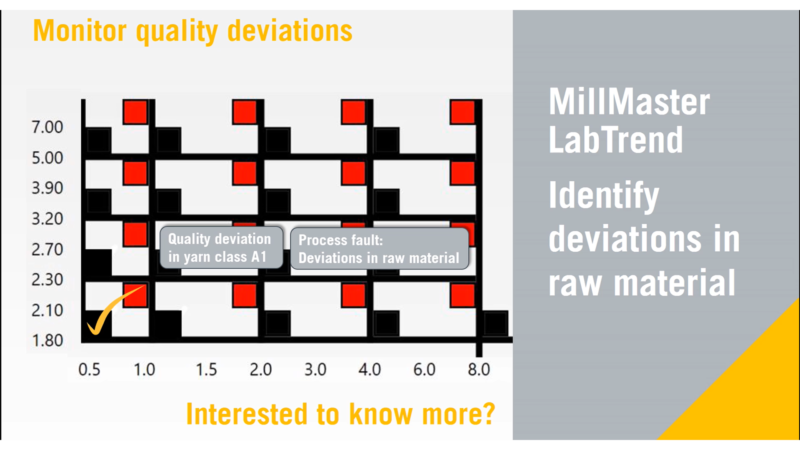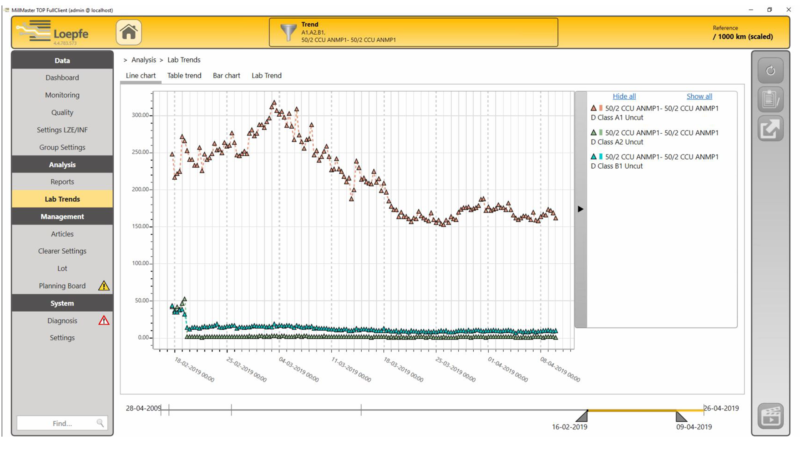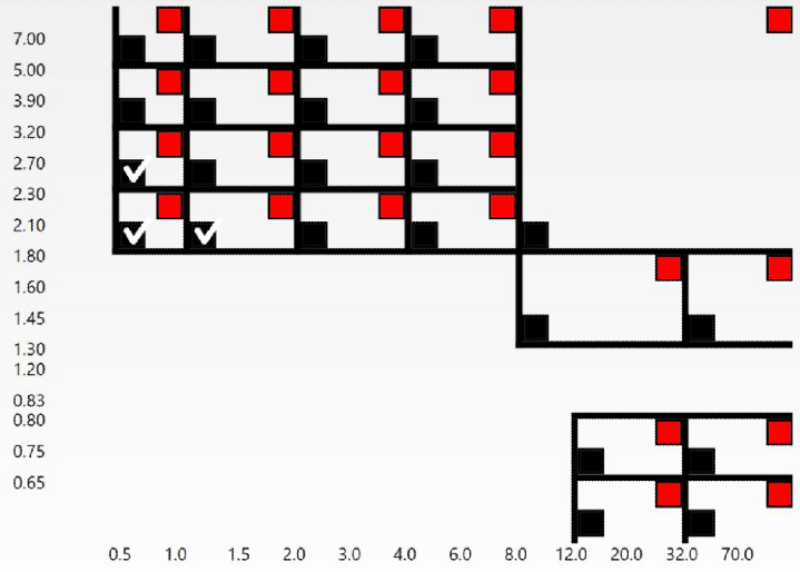MillMaster Lab Trend - Changes in raw material

With its “Lab Trend”, MillMaster TOP offers a comprehensive analysis tool for determining fluctuating yarn properties and their causes. Deviations in the yarn quality produced may result from the following factors:
- Raw material change
- Settings changes
- Wear and tear
- Dirt
- Climate change

An example of how spinning mills can identify raw material problems by using "Lab Trend".
The graph (Figure 1) shows a clear increase in events at the beginning of the production lot. The number of uncut events in class A1 normally ranges between 150 and 180 faults. Here, it can be seen that the number of events increased - over a period of about two days - to an alarming 320 events.

Solutions & Benefits
It is vital that the cause of these quality changes is eliminated in the long term – in other words, fluctuations in the raw material must be avoided. The information provided by "Lab Trend" about the changes in class A1 (see Figure 2) can now be identified and narrowed down by means of the online yarn classification table.
The online yarn classification table shows possible causes of an increased number of events in class A1:
- low micronaire
- immature fibers
- bad carding
- insufficient nep removal at combing
- trash in yarn
In this simple and easy way, Loepfe’s MillMaster TOP "Lab Trend" enables targeted intervention should quality changes occur and helps to ensure consistent yarn quality throughout the complete spinning process.